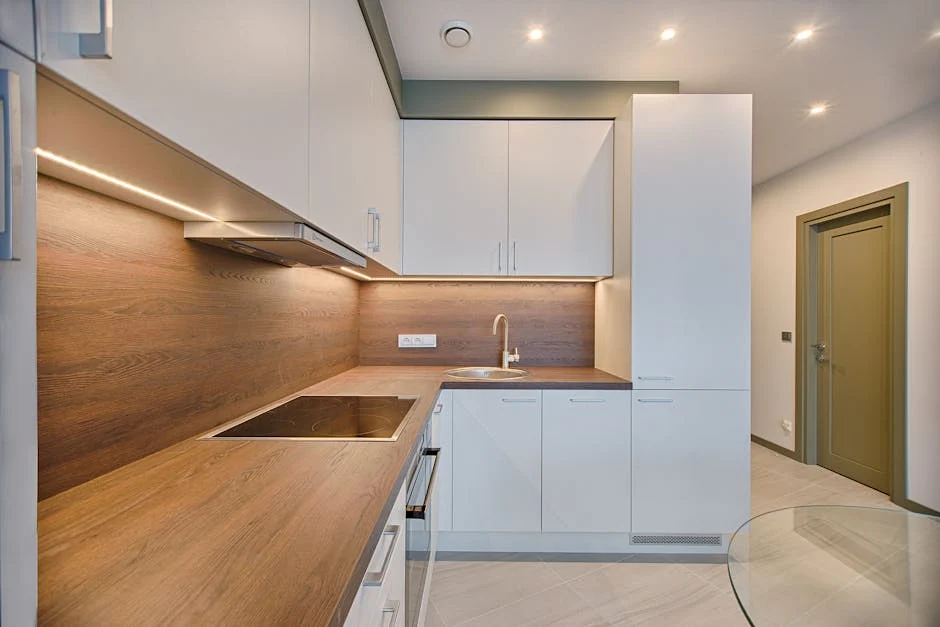The New Luxury: Why More Homeowners Are Choosing Modern Minimalism Over Maximalism
Introduction
For years, the term “luxury” in home design conjured images of opulent furnishings, elaborate details, and a general sense of “more is more.” This maximalist approach, characterized by layers of textures, bold colors, and collections of treasured items, dominated high-end interiors. However, a significant shift is underway. More and more homeowners are redefining luxury, embracing the clean lines, uncluttered spaces, and intentional simplicity of modern minimalism. But why this dramatic change?
The Allure of Modern Minimalism
What is Modern Minimalism?
Modern minimalism is more than just an aesthetic; it’s a lifestyle philosophy. It prioritizes:
- Functionality: Every element serves a purpose.
- Quality over Quantity: Investing in fewer, higher-quality items.
- Clean Lines and Open Spaces: Creating a sense of calm and order.
- Neutral Color Palettes: Emphasizing light and shadow.
- Conscious Consumption: Avoiding unnecessary clutter and waste.
The Rise of Minimalism: Driving Factors
Several factors contribute to the growing popularity of modern minimalism:
- Overstimulation and Digital Fatigue: In an increasingly chaotic world, a minimalist home offers a sanctuary of peace and tranquility. It’s a conscious retreat from constant noise and visual bombardment.
- The Marie Kondo Effect: The KonMari method, popularized by Marie Kondo, encourages decluttering and keeping only items that “spark joy,” aligning perfectly with minimalist principles.
- Sustainability Concerns: Minimalism aligns with eco-conscious living by promoting mindful consumption and reducing waste. Choosing durable, timeless pieces over trendy, disposable items is key.
- Financial Prudence: While high-quality minimalist design can be an investment, it often leads to more conscious spending and avoiding impulsive purchases.
- A Shift in Values: Many are moving away from material possessions as a measure of success and happiness, instead prioritizing experiences, relationships, and personal well-being.
The Benefits of a Minimalist Home
Beyond aesthetics, minimalist living offers numerous practical benefits:
- Reduced Stress: A clutter-free environment promotes mental clarity and reduces anxiety.
- Easier Cleaning and Maintenance: Fewer items mean less to clean and organize.
- Increased Focus and Productivity: A streamlined workspace can enhance concentration and efficiency.
- More Time for What Matters: By simplifying your life, you free up time for hobbies, relationships, and personal pursuits.
- A Sense of Calm and Serenity: The uncluttered aesthetic fosters a peaceful and relaxing atmosphere.
Modern Minimalism vs. Maximalism: A Head-to-Head Comparison
To understand the shift, let’s directly compare these contrasting styles:
| Feature | Modern Minimalism | Maximalism |
|---|---|---|
| Color Palette | Neutral, monochromatic | Bold, vibrant, eclectic |
| Furniture | Essential, functional, high-quality | Ornate, decorative, layered |
| Accessories | Minimal, intentional, curated | Abundant, varied, collected |
| Space | Open, uncluttered, airy | Filled, layered, cozy |
| Overall Feeling | Calm, serene, intentional | Energetic, vibrant, expressive |
Examples of Modern Minimalist Design
Architectural Minimalism
Think clean lines, flat roofs, large windows, and open floor plans. Materials like concrete, steel, and glass are often used to create a sense of spaciousness and light.
Interior Minimalism
This involves a focus on essential furniture pieces with simple silhouettes, neutral color schemes, and a deliberate lack of unnecessary decor. Natural light is maximized, and storage solutions are carefully considered to maintain a clutter-free environment.
Minimalist Decor
In minimalist homes, decor isn’t nonexistent, it is intentionally chosen. Art pieces that add character and style are common, such as:
- Minimalist Abstract Art
- Pottery
- Sculptures
Conclusion
The shift from maximalism to modern minimalism represents a profound change in how we define luxury and value our living spaces. It’s a move towards intentionality, sustainability, and a desire for a calmer, more focused life. While maximalism celebrates abundance and self-expression through possessions, minimalism champions simplicity and freedom from clutter. As homeowners increasingly seek refuge from the chaos of modern life, the appeal of modern minimalism – a philosophy of “less is more” – is only set to grow.














Post Comment